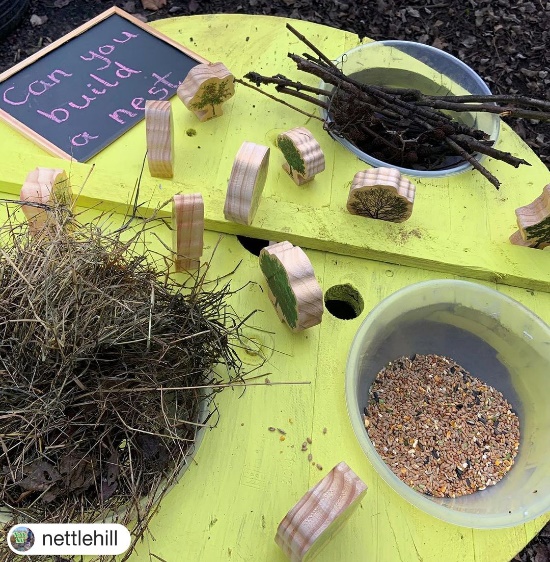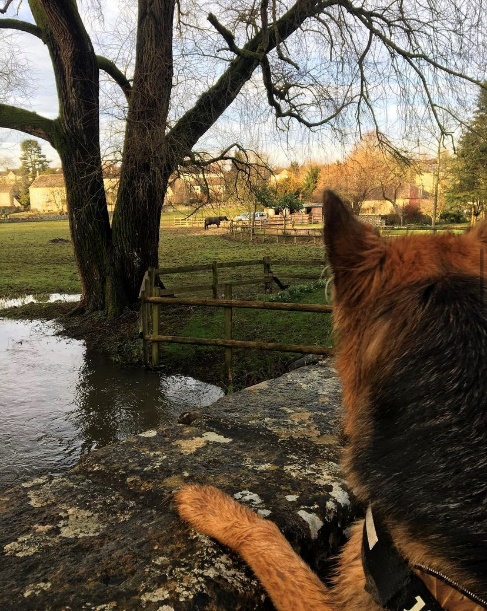3 EYFS Backed Reasons Why You Should Engage in Outdoor Play21 February 2022 | Hannah I don’t know about you, but I find that my productivity and energy levels skyrocket after just a mere thirty minutes outside each day. I make sure that I take a walk and breath in some fresh air during each lunch break, because I know that I will return to my desk feeling reinvigorated and ready to tackle whatever is next on my to do list. Studies have shown that individuals breathing in better air showcased signs of better decision-making skills, with adults studied showing “…higher test scores across nine cognitive function domains when [they were] exposed to increased ventilation rates, lower levels of chemicals, and lower carbon dioxide”. In other words, adults perform better when exposed to outdoor conditions - and the logic follows through for children. Being in nature has been proven to reduce stress! What you see, hear and experience at any given moment whilst outdoors can enhance your mood by reducing feelings of anxiety - regardless of your age (University of Minnesota, Taking Charge of Your Health and Wellbeing). The 2008 Early Years Foundation Stage Guidance formally recognised the importance of outdoor learning and play across the British education system. The document refers to play as being “the underpinning factor in Early Years Education and that opportunities to play indoors and outdoors must be provided”. Outdoor play should feed into the seven key areas of Early Years Education outlined within the Early Years Foundation Stage (EYFS). These seven key areas set the standards for learning and aid with the crucial development of children from birth to the age of five. These key areas include: - Communication and Language
- Physical Development
- Personal, Social and Emotional Development
- Literacy
- Mathematics
- Understanding the World
- Expressive Arts
In this blog, I will take you through some of the benefits of outdoor learning on Communication and Language, Physical Development, and then finally on a child’s ability to Understand the World. Communication and LanguageSome children may find it easier to communicate and express themselves when outdoors. This can firstly be linked to the better quality of air which allows for better cognitive function (less brain fog, more energy!). However, the outdoors also represents a low-pressure environment for children due to connotations formed at an early age with the outdoors as a safe place for play. This means that children are inherently more relaxed outdoors compared to indoors, which may be linked to the pressures of learning and therefore represent an environment where there is more at stake.  Our friends over at Nettle Hill using the Seasons Trees for their outdoor play. I vividly remember what a difference the outdoor setting made to a child I used to look after at Nursery. When indoors, the child was timid and reluctant to answer any of the questions I would address to both them or the class - questions as basic as what their plans were after nursery to if they wanted to paint with me on the table. However, once outdoors this child really came into their own. I learnt through observing their play that they had a particular interest in dinosaurs, and within ten minutes of engaging in meaningful conversation through play this child had described all of the different features of the various toy dinosaur species we had outside with ease and confidence. Children, just as adults, are more likely to engage in free and open conversation when relaxed, making the outdoor setting a fantastic way to develop communicative and linguistic skills without them even realising that they are doing so. Physical DevelopmentOne of the four ways in which children learn is through movement, and the outdoors is the perfect environment to facilitate this type of educative experience. The physical boundaries and risks are significantly reduced in an outdoor setting, meaning that children are more likely to engage in meaningful movement when outdoors compared to indoors. For example, children who play indoors are less likely to be exposed to situations where they will need to undertake a form of risk-benefit analysis. Let me explain what I mean here.  Even the pets of Polydron and Educational Advantage want to climb trees! I am yet to meet a child who does not contemplate climbing a tree, an action and decision which involved the rapid process of weighing up pros and cons. A child will examine the tree, taking into account features such as height and sturdiness of the framework in front of them, as well as weighing up the likelihood of experiencing danger (falling or being stuck) before deciding whether or not to embark (do you see what I did there?) on their climbing expedition. A child will learn regardless of what the outcome of this escapade may be. Being rescued by their educational supervisor means that the child will have learnt about their own limits and will shape future decision-making processes; being successful will develop the child’s resilience which will trickle into other aspects of their educational journeys, aiding in the formation of a can-do attitude to life’s challenges. Understanding the WorldIn a world where children learn how to use iPads before they learn to write their name, it is so important for educational settings to act as a vector between children and the natural world. The more time spent outside, the more likely a child is to ask questions about why the world is the way that it is. When playing outside, a child is sub-consciously observing and exploring the natural world around them, asking questions to adults or their friends about aspects of the natural world that may excite them or puzzle them.  Children who are outside all year around may notice that some trees turn orange and others stay green come the winter months, prompting conversations about seasons. Through asking questions and finding answers, not only are children learning through play and sensory experience, but they are also attaching meaning and interest to the environment and are therefore more likely to show care and concern for the habitat which homes them as they develop. Furthermore, experiencing joy and genuine pleasure from the outdoors on a routine basis will mean will further enhance the care and concern children will exhibit towards the environment. The benefits of outdoor play to a child’s ability to metabolise the word around them should not be understated. If anything, helping to build a relationship between the upcoming generations and the natural world has arguably become more important than ever. Upcoming developments to the national curriculum following last year’s COP26 Summit which places interaction with the environment at the centre of educational practice further emphasises the need for meaningful engagement with the outdoor world from an early age - and what better way than through play? Final thoughtsWhilst outdoor play is a relatively simply objective to achieve, the benefits this activity will have both on the cognitive function and personal development of a child should not be understated. Through meaningful interaction and engagement with the natural world, children will be given the opportunity to explore their naturally inquisitive minds in a low pressure and fun environment. Outdoor play will help children find joy in learning, and will help create a foundation that will certainly aid them as they navigate through life. Other Sources |